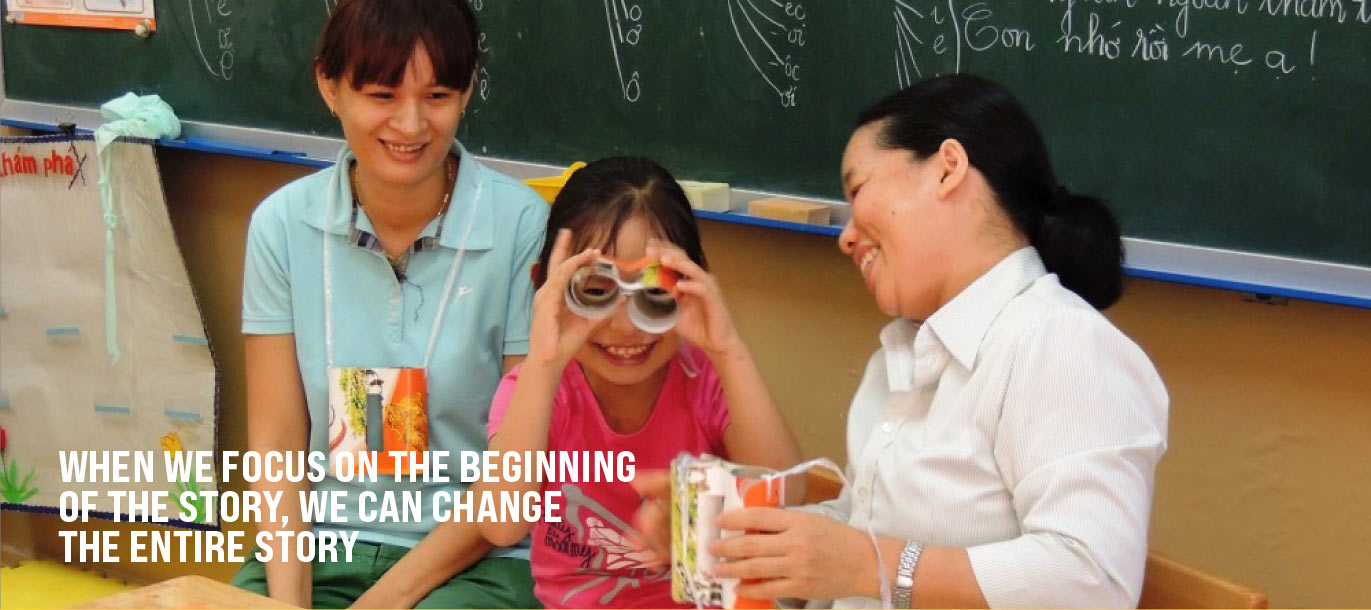

When we focus on the beginning
of the story, we change
the entire story.
The World Health Organization estimates that there 34 million children globally with significant hearing loss and the majority live in developing countries. Left untreated, hearing loss contributes to poor outcomes in language and learning in young children that have lifelong and permanent ramifications on their quality of life.
Continuum of Care
Many studies have shown that excellent listening and spoken language outcomes are possible in babies and young children with congenital hearing loss. However, these outcomes are dependent on a Continuum of Care being made available to them in their first six years of life that includes:
- Early identification of hearing loss through hearing screening programs,
- Informed and engaged family members and caregivers,
- Timely fitting of hearing technology (hearing aids or cochlear implants), and
- Access to locally-based professional expertise in rehabilitation (audiology, auditory-verbal practice, early intervention).
When all four of these elements are in place, babies and young children with all degrees of hearing loss can learn to listen and speak. They can attend mainstream schools with their typically hearing peers, pursue broad employment opportunities in their future, and integrate fully into their hearing communities.
However, there is a finite window of time that this reality is possible. After age 6, the brain moves on to other areas of development and the chance for a child who is deaf to learn to listen and talk is permanently lost. Time is of essence.
Unfortunately, in many developing countries, the elements in the Continuum of Care are fragmented or do not exist at all, negatively impacting the futures of thousands of children. The Global Foundation For Children With Hearing Loss is working to change this reality.